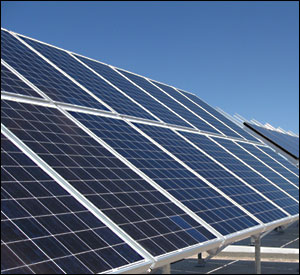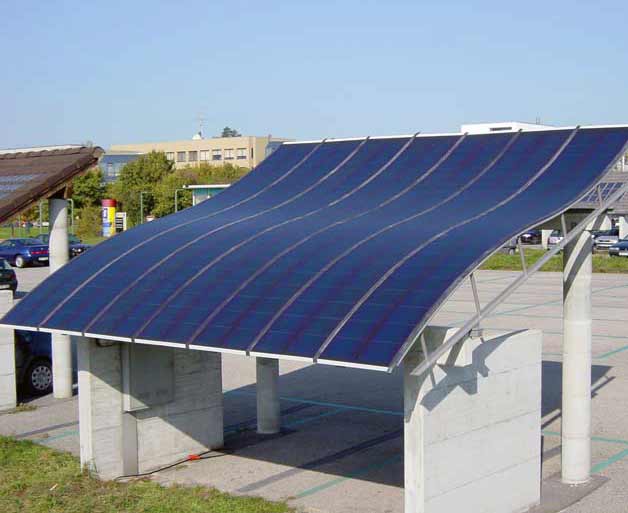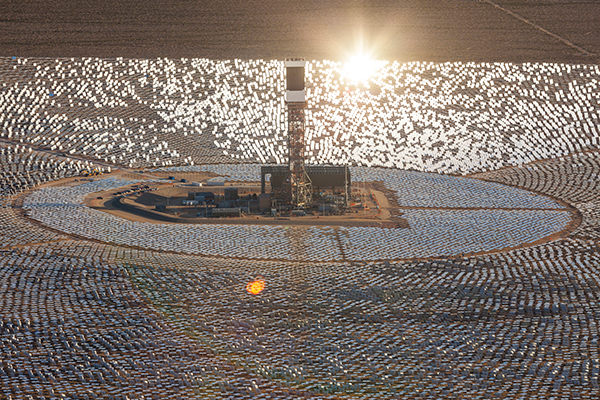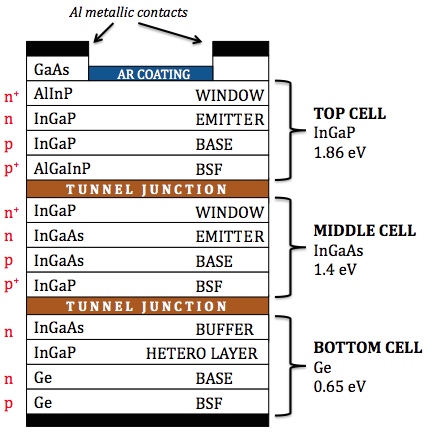The NREL Chart shows many solar technologies, but when it comes down to what is actually installed, the options boil down to three types.
The chart below is a very rough estimate I calculated based on 2013 Electricity Generation numbers. I did some guestemation, so the data is not precise, but I believe it is close enough to tell the story on the breakdown.
Notice that we have three types of Solar technologies, and that the install base is split 50 / 50 between Residential/Commercial (i.e. Rooftop) and Utility (installation > 1 MW). Also notice the overwhelming majority of Solar is PV (Crystalline Silicon and Thin Film).
| Solar Technology Breakdown (Estimates from 2013 Generation #s)[1, 2] | ||||
|---|---|---|---|---|
| T | c-Si PV | Thin Film PV | CSP | Total |
| Res/Comm | 47% | 5% | T | 52% |
| Utility | 38% | T | 10% | 48% |
| Total | 85% | 5% | 10% | 100% |
Photovoltaic (PV) Options:
Crystalline Silicon (c-Si)
As we can see in the chart above, Crystalline Silicon makes up the large majority of the Solar energy install base. There are two types of Crystalline: Monocrystalline and Polycrystalline. Monocrystalline has had the larger install base until recently. Over the last 5 years, Polycrystalline is now more popular, and this is because Poly is cheaper to manufacture. In a monocrystalline structure a large crystal must be grown. Mono is a little more efficient, and handles low light situations better. Poly is less expensive. It's about a wash between the two in terms of overall cost when you include all the factors. However, Polycrystalline has become the more popular of the two in recent years.

Thin-Film
Thin Film was up to about 20% of the install base, but started to lose ground due to the popularity of Polycrystalline. Thin Film is made by depositing one or more thin layers, or thin film (TF) of photovoltaic material on a substrate such as glass, plastic, or metal. Thin Film is more flexible (literally) and less expensive than Crystalline Silicon, but is also a little less efficient. There are primarily three materials used for Thin Film: Cadmium Telluride (CdTe), Copper Indium Gallium (CIGS), and Amorphous Thin Film Silicon (a-SI, TF-Si). CdTe has been widely deployed in the recent Utility-Scale PV build-out (more on that later).

Solar Thermal Options
Concentrated Solar Power (CSP)
Concentrated Solar Power uses mirrors and optics to grab sunlight from a wide area and concentrate it into a small area. It captures the Sun's energy in the form of heat, and that heat drives a heat engine (usually a steam turbine) connected to an electrical power generator. I was not able to find definitive figures on efficiency, but it appears CSP efficiency ranges from 20% to 30%. CSP is almost exclusively the domain of the utility companies due to the cost and size of the installation.

